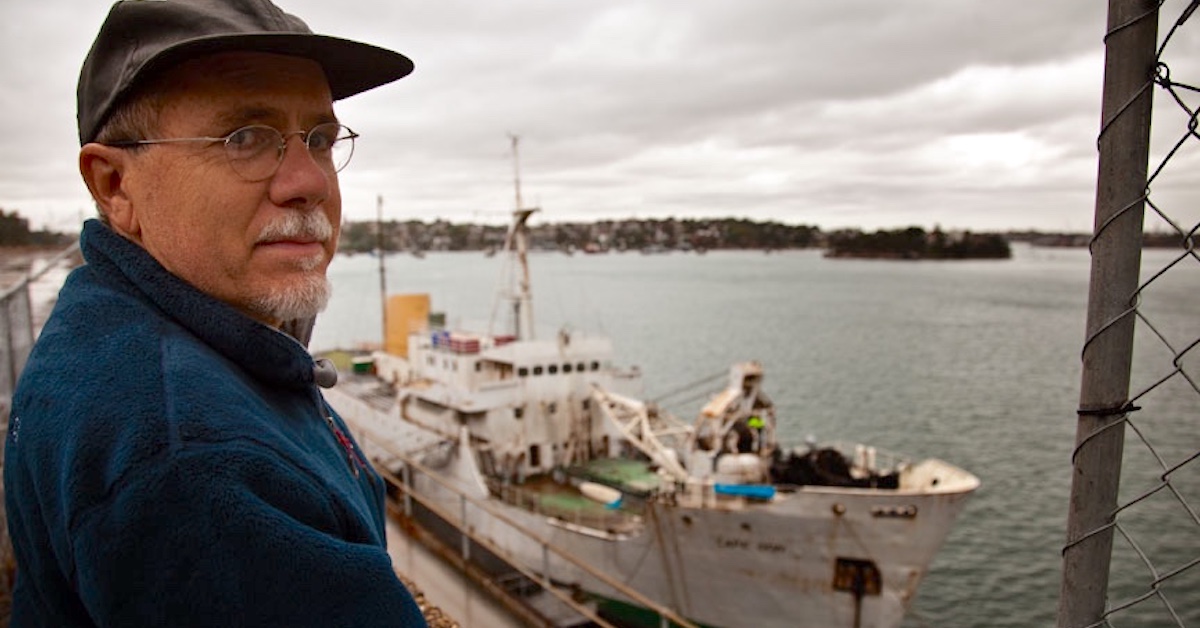Award-winning sound artist Richard King shares stories from his decades-long experience in recording ships and boats for blockbuster film projects.
We're proud to introduce King Collection: Watercraft – our latest exclusive library developed in collaboration with Academy Award®-winner Richard King (Dunkirk, Master and Commander: The Far Side of the World). Make waves in your projects with masterfully captured sounds from King's private library of 24 different boats and ships both modern and historical – including late-1700s tall sailing ships, high-speed motorboats, sailboats, ocean liners, tugboats, and more.
Build your sonic world with impeccable recordings of engines and maneuvers plus tons of related material including mechanical and cabin sounds, huge waves crashing on deck, dripping water, creaking wood, flapping sails, whining hydraulics, horn honks, and harbor ambience. Thorough multi-mic recordings synced from multiple perspectives let you blend your own designs – perfect for creating drama and realism when cutting between shots.
We talked to Richard to learn about some of the big-budget, extraordinary recording sessions and artistic choices that went into the library's massive effort. He discusses his miking approach and shared a few ingenious ideas for how to record the sound of a ship in a gale without risking your life.
Explore King Collection: Watercraft – Available Now
PSE: How would you describe what’s included in King Collection: Watercraft?
Richard King: The original idea came from the vast amount of ship recordings we did while working on Master and Commander. We recorded three tall ships, from the 70' SWIFT OF IPSWICH to the 180' SURPRISE. On each we had full access and control so we could get the ships sailing on all points of sail, at different speeds and in a variety of weather conditions.
So that was the inspiration, all the great recordings we got on those ships. Then I started to delve into the library and realized there were lots of other boat recordings there too, including powerboats of various kinds. It all seemed to add up to a pretty comprehensive marine library.
"The wake of the vessel is as important as the vessel itself for putting you in the space. Hearing the water from the inside of the boat is important. Just hearing it rush past the hull...From my decades of sailing, I know all these things that you'd hear on a boat."
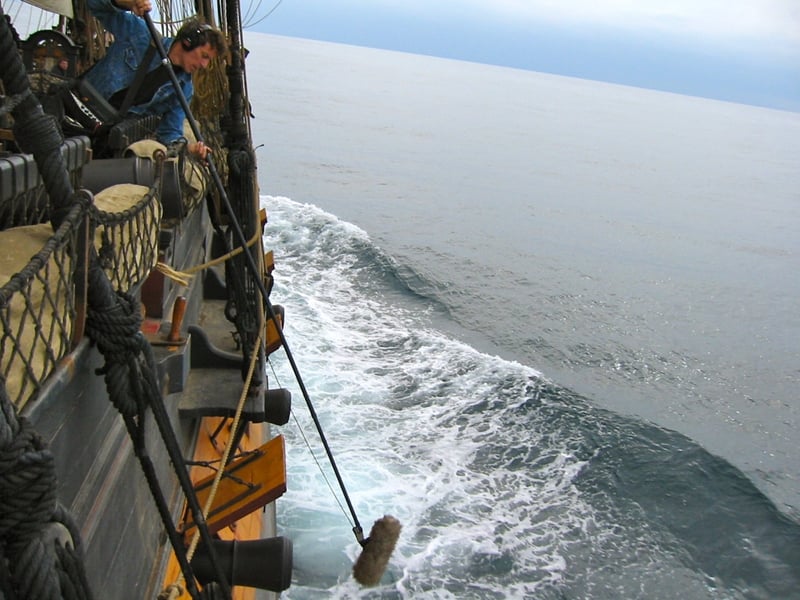
Handheld recording on the HMS Surprise
What was it like recording those tall sailing ships?
For the recordings we did on SURPRISE, we had full access to the ship at sea for several days. We even had the full crew (in their period outfits!), so they could raise, lower and adjust the sails. We also recorded all the doors and all the mechanics on board, the capstan, the chain pumps (bilge pumps) etc. All the equipment was period accurate and worked because she had been a working ship on the East Coast, named the ROSE. Fox bought the ship and brought it around through the Panama Canal, up to Ensenada.
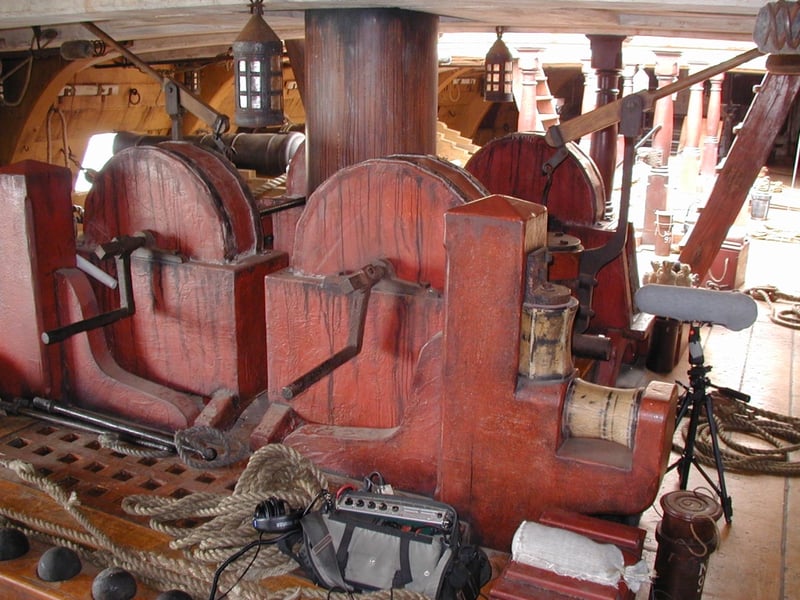
HMS Surprise bilge pump
It was just a spectacular experience because we had so much access. And I love ships, and I love sailing, so I know a little bit about what kinds of sounds I needed for the ship maneuvering in various ways. We had a crack captain and crew who had been on the show for a year and they really knew their stuff.
One of the days we went out it was very flat, very calm, out in the Pacific off Mexico, but I wanted to get some wave crashes. So we had them turn the engine on so we could make big circles, and then we cut the engine just before the ship ran through her own wake.
The recordings we got onboard SWIFT OF IPSWICH, which was Jimmy Cagney's private yacht back in the day, were a bit more dramatic. Wind and swell was up when we set out from San Pedro towards Catalina. A dog of a ship but she made some great sounds!
We also borrowed a sail from the SURPRISE and took it out in the desert top record clean sail flaps. We tied the head of the sail to a telephone pole, the tack to the trailer hitch of a car and wrapped the sheet around the trailer hitch of another vehicle, so we had three good points of attachment. It's really windy out in the desert a lot of the time so we got really clean sail flaps.
Getting these sounds must be a massive effort. Some of these are huge ships. How do you prepare technically for something like that?
Regarding SURPRISE the producer obtained full access for us in the weeks follwing the wrap of principal photography. The sounds of the ship were really important to [Director] Peter Weir. He and the producer went on a leg of a voyage. There was a reproduction of Magellan's ship and they were sailing it around the world, around the Roaring Forties, way down south. They took a leg from Australia to New Zealand, which I think is 800-1,000 miles. That’s pretty far. Further than you'd think. And Peter said that one of the things that impressed him the most was the sound. The ship is alive. It's creaking. It's moving. It's almost like a living thing. He felt that it was very important for the audience to experience that, to really get in the spirit of the movie.
I work with two sound effects recordists who are really, really good and we brought a ton of gear, crates and crates and crates and crates and crates of microphones and cables and various gear and just started recording. We spent about a week down in Mexico, both on board the ship and on the set ship. The set ship was a full size ship, from the waterline up, rigging and everything. And it was in a big tank at Baja Studios in Rosarita Beach, where they filmed Titanic. It's an infinity pool. That ship was on gimbals. So, below the waterline, it was just massive machinery that could move the ship fore-and-aft and athwartships. They could simulate going over big ocean swells. They had these enormous dump tanks that must have been 500 to 800 gallons of water, on each side, that they could dump on the bow for big wave crashes.
We'd have them sit the ship flat and dump it. We'd have them incline the ship with the bow up so that it rushed down the deck a lot faster. We set up mics below decks and we were up in the rigging. I was way out on the bowsprit recording so we got every angle of these big wave crashes on the water trickling down from below.
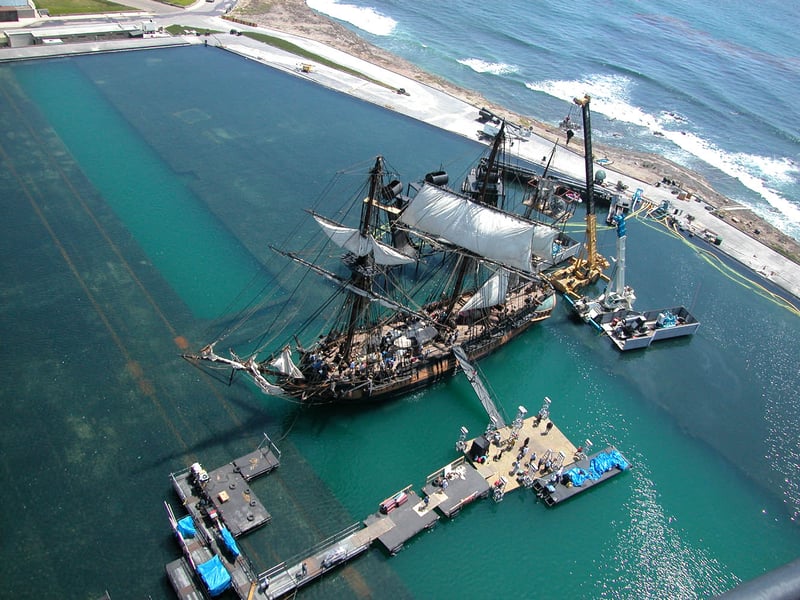
Filming of "Master and Commander" at Baja Studios
Credit: Comisión Mexicana de Filmacion | License: CC BY-SA 2.0
How many mics did you have around the ship?
For the dump tank recordings we did on the 'frankenship' (see photo above, this copy of the ship sat on hydraulic gimbals) we probably had 8 or 10 mics all around the ship, some mounted and some handheld. Most of the recording at sea was handheld rigs. Boom pole over the side to get wake, down to the bilge where there was about two feet of water, and it was sloshing this large space almost the length of the ship. That was a really great adventure.
And then as years went by, other things with ships came up...
We did the second and third of Chris Nolan's Batman movies, The Dark Knight and The Dark Knight Rises. [Director] Chris [Nolan] wasn't totally happy with the sound of the Batmobile for Batman Begins, so I was tasked with redesigning it, and one of the engines that we used was a Cigarette boat, which is a twin V12 gas engine. Monster of a racing boat.
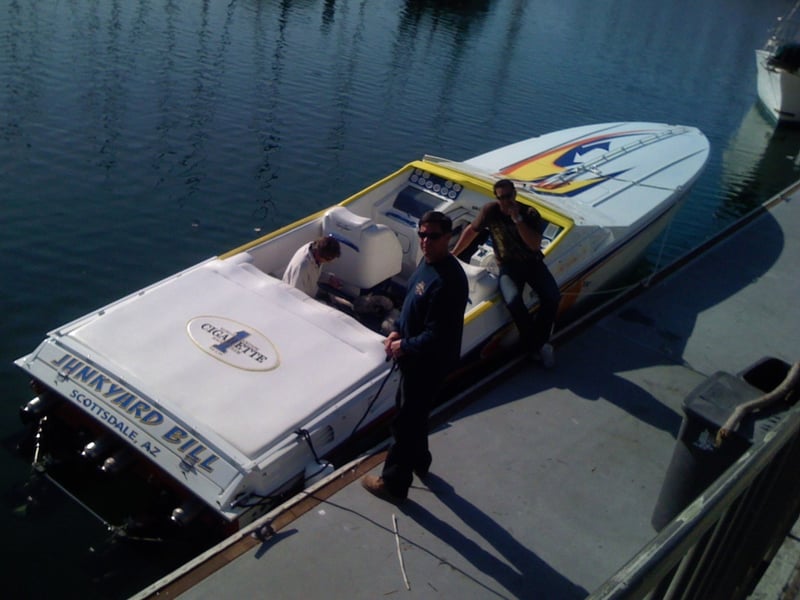
The Cigarette boat that provided the sound for the Batmobile
Boats kept cropping up in other movies. For Dunkirk, one of the stories involved crossing the English Channel in a small 45 foot powerboat. I searched everywhere for the right sounding engine because I wanted something that had a chugga, chugga sound. I was looking for a diesel, but I couldn't find a boat with a diesel engine that had the right vibe. Then we found the Moonstone, and it just had this great, rhythmic chug, chug, chug, chug, chug, which I thought would be great with the music and the concept that Chris was coming up with about risset tones (Shepard tones) and rhythmic sounds to amp up the tension and the anxiety.
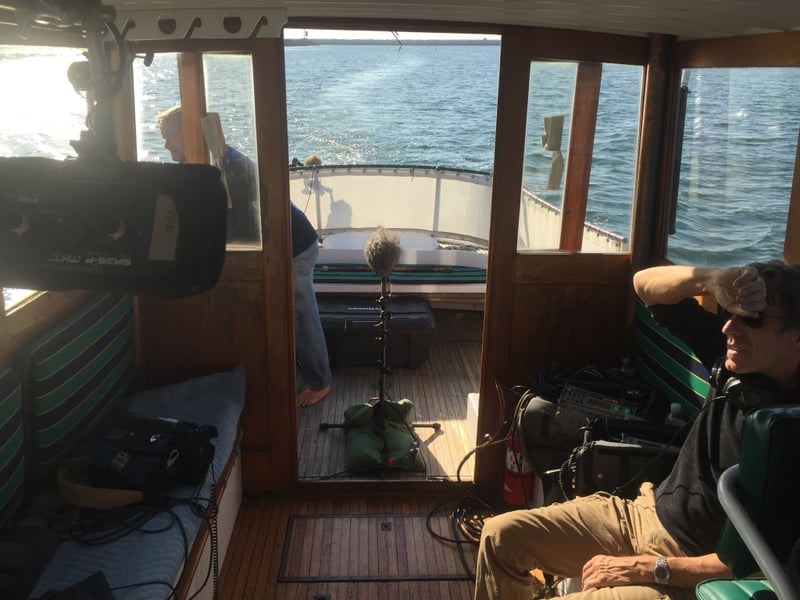
Recording the Moonstone for "Dunkirk"
How do you have the conversation with the director or producer to say, "I'm going to spend X amount of time to find just the right diesel engine?"
I don't even talk to them about it. I have a budget to do the show, so as long as I'm within my budget, I take on that task myself. I mean, there are times that I need more money to do something extraordinary that is not in the budget but I think is really important to do, and then I'll go to the producer and see if I can get more money. But I'm basically working within the budget we agreed upon to do the show. For two of the tall ships, I contacted the Los Angeles Maritime Museum who owns a couple of these ships, and I think we worked a donation for the museum to do this.
I think they chose us to break in this new skipper on the Swift of Ipswich who'd never soloed this ship. [laughs] I felt bad for the guy because the ship was a real dog. I mean, it was just a bad sailboat. Sounded great, but it did not sail well at all. He really had to struggle to get us what we wanted.
"You get your feel of where the most interesting and distinct sounds are, like the wake distinct from the engine in a powerboat. And that gives you latitude later on when you're putting it together and mixing it. You can accentuate different sounds for different camera perspectives."

Swift of Ipswich
So you just pick up the phone yourself and go, "Hey, I do sound for movies, can I come in and record some?"
Yeah.
What's their reaction?
Sometimes they don't understand what you want to do, they think you want to film. So you have to explain in great detail, “No, there's no cameras, it's just sound equipment” and sometimes they're just not interested. Most of the time they're like, "Yeah, sure." And you just make it worth their while, and it's not that hard. It just takes persistence and occasional help from a marine technical advisor, somebody who does this for a living, who borrows and rents boats for movies. Most of the time it's just me or my assistant just picking up the phone.
It's fun to work with non-industry people because they really know their world, whatever that world is, in this case sailing. We know our world and often don't know very much about each other's worlds so it's fun. You learn a lot, it’s one of the perks of the job.
We also did some recordings from the HMS BELFAST, which is a British Royal Navy Cruiser docked in London, on the Thames. That ship is decommissioned and doesn't move.
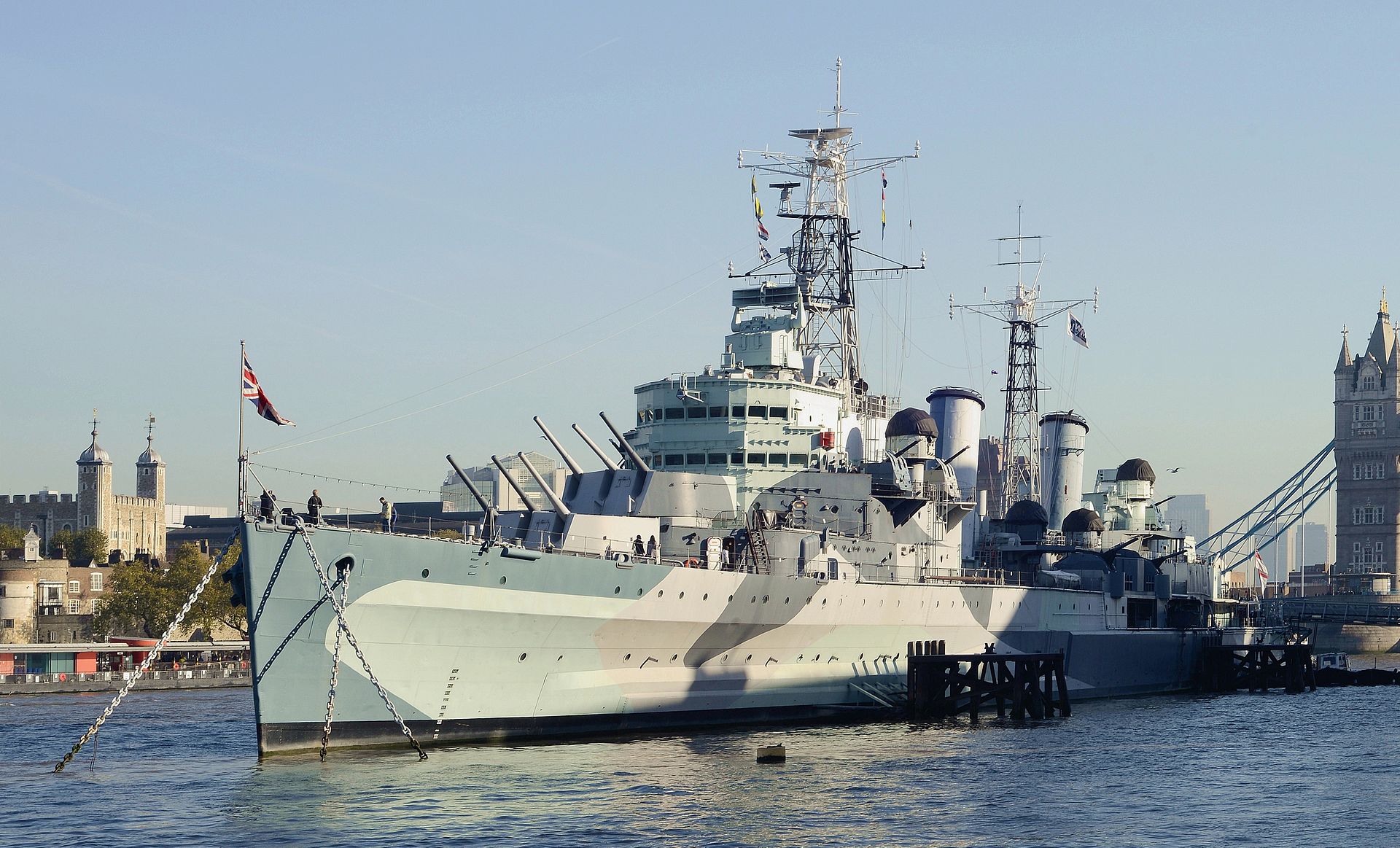
HMS Belfast
Credit: Alvesgaspar - Own work | License: CC BY-SA 3.0
Isn't it incredibly noisy on the Thames?
Surprisingly not that night. We recorded group ADR, voices and stuff in the metallic spaces of it too. People running up and down steel stairs. We did it in London because this was also for Dunkirk, all British cast, all British characters, so we wanted a Loop Group that lived there, not Brits who had moved to LA.
So I contacted the Imperial War Museum which owns the ship. I think we offered them a small donation and we recorded at night, after the museum had closed. They just said, "Lock the door on your way out," basically.
"I was tasked with redesigning [the sound of the Batmobile], and one of the engines that we used was a Cigarette boat, which is a twin V12 gas engine. Monster of a racing boat."

Recording the V12 engine
I find that with continuous and repetitive elements like water, it's so easy to end up with what’s essentially white noise. This library is so rich in detail, but at the same time you can feel it's going to sit right in a scene. Was that something you had in mind, or is it just your artistic sensibility?
I think it's how you record. If you're recording the wake of a boat, you want the water to be doing something. As you say, it can easily turn into this white noise thing. You want there to be some slapping or some texture to the water. Also, to get boat wakes, without the engine, the boat needs to be going fast enough you don't hear the engine. You're recording way up, from the bow.
The wake of the vessel is as important as the vessel itself for putting you in the space. Hearing the water from the inside of the boat is important. Just hearing it rush past the hull. Again, from my decades of sailing, I know all these things that you'd hear on a boat.
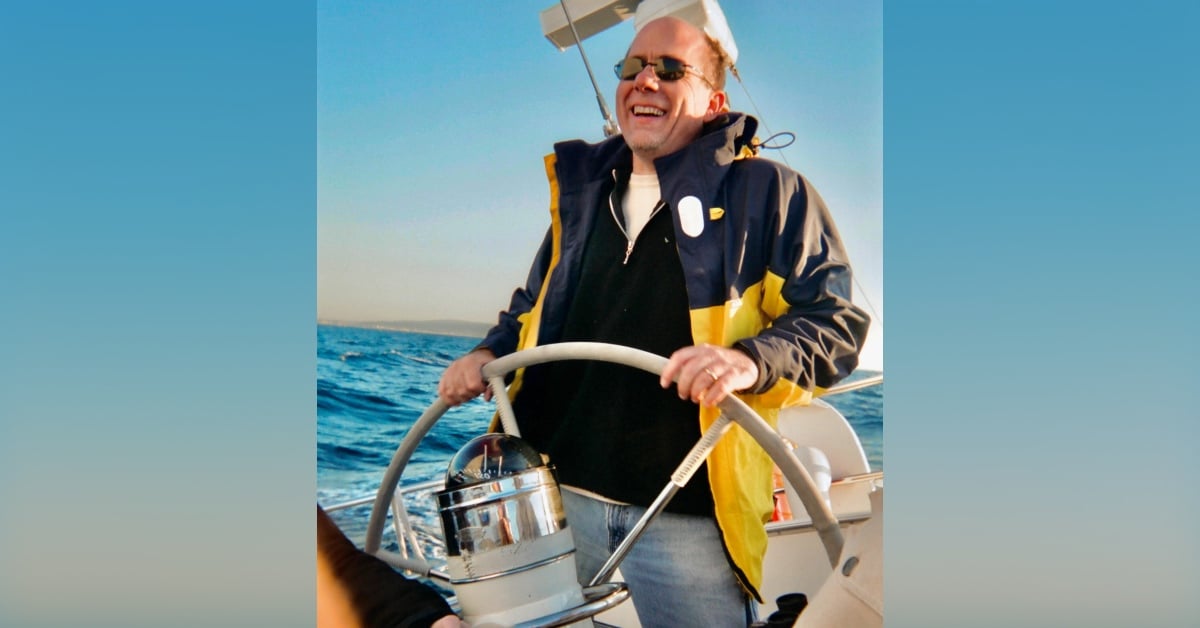
Richard King on his boat 😄
You blended two worlds in this project. Your knowledge of sailing and sound design.
Yeah, I know what sounds might be heard in different spaces, it was quite an elaborate project. Because in Master and Commander you're basically on the ship the entire movie, we wanted different spaces in the ship to sound quite different. From the low bilge deck, water sloshing in the bilge, you'd hear creaks. You move up a deck, you start getting near the water line, you start hearing water rushing by the ship. Up on the gun deck, you start maybe hearing some sounds from on the top deck. People running around, maybe wind in addition to the water and the creaks.
Then you get up on deck and it's more about hearing the ocean, hearing whatever the sails are doing, wind through the rigging, the wake of the ship moving past. It's about really trying to isolate each sound so that you're not ambivalent about the different sounds. They're as distinct as we can make them.
"I work with two sound effects recordists who are really, really good and we brought a ton of gear, crates and crates and crates and crates and crates of microphones and cables and various gear and just started recording. We spent about a week down in Mexico, both on board the ship and on the set ship. The set ship was a full size ship, from the waterline up, rigging and everything."

HMS Surprise
Some of the sounds in this library feel so smooth and relaxing despite a lot of splattering and creaking. Again, is it simply guided by your artistic sensibility or do you adopt certain miking techniques to achieve this result and avoid spiky transients?
Some of that is mic proximity. If you're too close you're not going to get the scope of the water, you're just going to get a bathtub sound. Mic choice is very important, whether you're using an omni or a shotgun mic, to get more precise. The ship sounds are mostly all in the mid range so there wasn't anything super low. We didn't need any SASS mics or any kick drum mics. But it's about finding the right microphone for the application and figuring out where it should be in relation to what you're recording. Imagining the movie in your head and thinking, “What would that sound like?”
We were on that ship so long, we spent so much time on it that we did everything. We did not leave a stone unturned. The only thing we couldn't get is a ship in a gale. I really wanted to go out in a strong storm, on a sailing ship, and see what it sounded like. I looked all over the world, but I couldn’t find somebody that was willing to do that. So we came up with this idea, again, of going to the desert, building a big wooden frame on the back of a pick-up truck. And then we got 1,000 feet of hemp rope and stretched it, in criss-cross. So we had this mass of line and tightened it with turnbuckles so it was really taught and then it was just this mass of lines going every which way. And then we drove the pick-up truck upwind at 30 miles an hour, in about 30 or 40 knot wind, so you've got a 70 mile an hour apparent wind going through this rigging.
And you're not getting the engine’s noise?
The whistling was so loud that we didn't get that. And we were recording from the bed of the pick-up truck so it was a little bit further away from the engine. Surprisingly, we didn't get the truck. Lots of variables with boats, sometimes they're hard to record in the location. The peculiarities of the boat. What it can and can't do. Recording boats is fun, it's just difficult because you have to get away from other motors, other engines, other sources of noise. Recording out of LA is tough depending on where you go because LAX is right on the water, so you have to go out of Long Beach usually, which is a little bit further away from the airport.
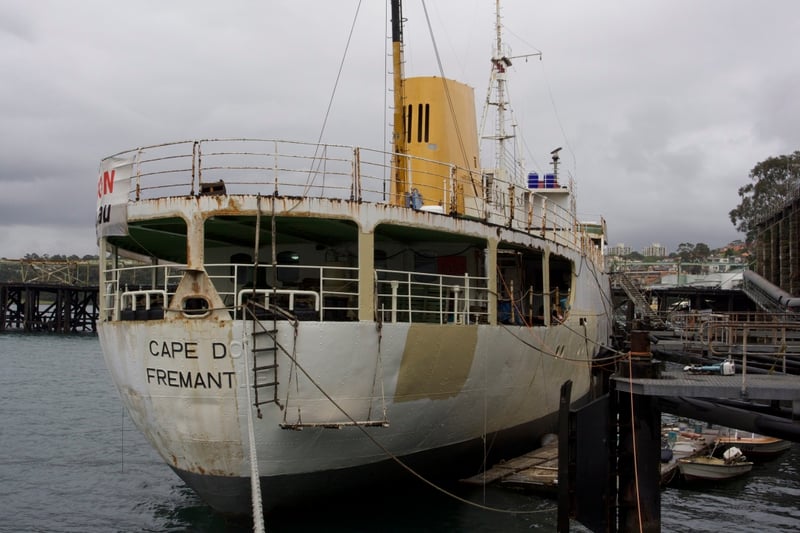
Cape Don, lighthouse tender
Did you stumble upon any happy accident during recording or editing?
Oh, yeah. All the time. You notice there’s an interesting creak, or certain areas around the engine sound really great. First it's a matter of lining up the boat and a location and somebody to operate the boat. Then, it's about figuring out where we can place mics. If it's a powerboat, we plant a bunch of mics in the engine compartment, maybe in the cabin and just try to get a comprehensive take on the boat.
It's a pretty comprehensive group of sounds. Again, from late 1700s sailing ships, through to modern, high speed powerboats, and it goes deep into the sailing ship world. There’s also a vast array of other smaller boats, Zodiacs etc. I think it's a really comprehensive library. I hope people like it and find it useful. Given its comprehensive nature, I think that it would be very helpful.
It's also true that some of these sounds can be used for other things. Like, for instance, the ship creaks from the SURPRISE, I've used them in haunted house situations or wooden buildings that are creaky. They're very versatile and very pitchable for different applications. Some of the boat motors, like I was saying, I recorded the cigarette boat for the Batmobile, are useful for other applications as well.
There are always surprises and you learn a lot, but usually by the end of the day, or by the end of however many days you got recording it, you've figured it out and you get your feel of where the most interesting and distinct sounds are, like the wake distinct from the engine in a powerboat. And that gives you latitude later on when you're putting it together and mixing it. You can accentuate different sounds for different camera perspectives.
"I think it's a really comprehensive library. I hope people like it and find it useful. Given its comprehensive nature, I think that it would be very helpful."
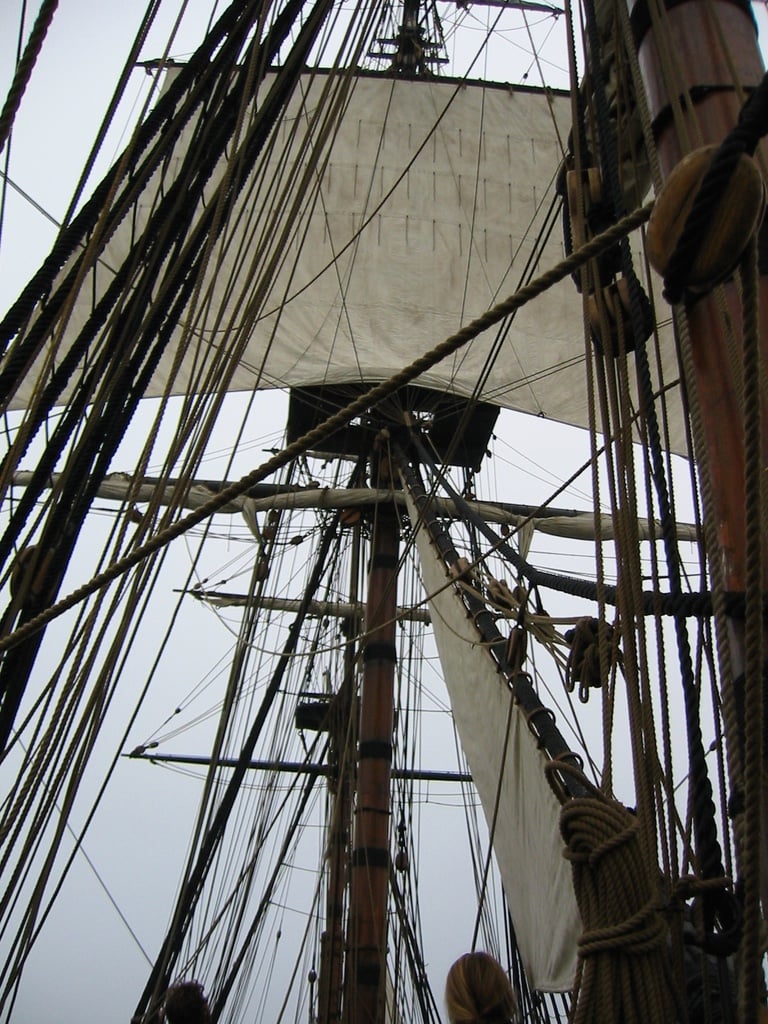
Explore King Collection: Watercraft – Available Now
Thanks to Richard King for sharing these stories, and to Andreas Russo for leading this interview!
Andreas Russo is an award winning film composer and sound designer.



